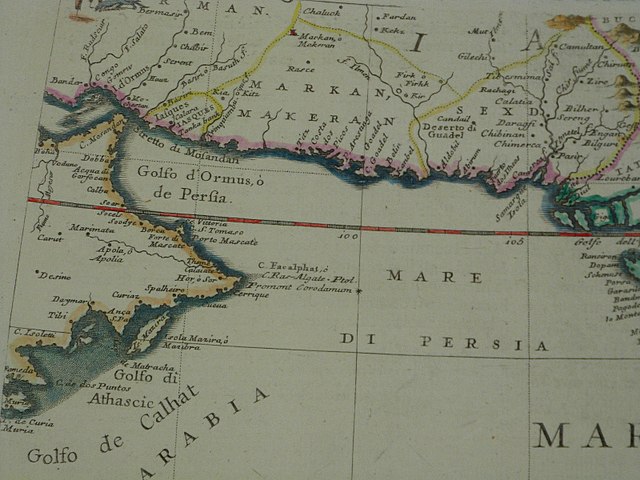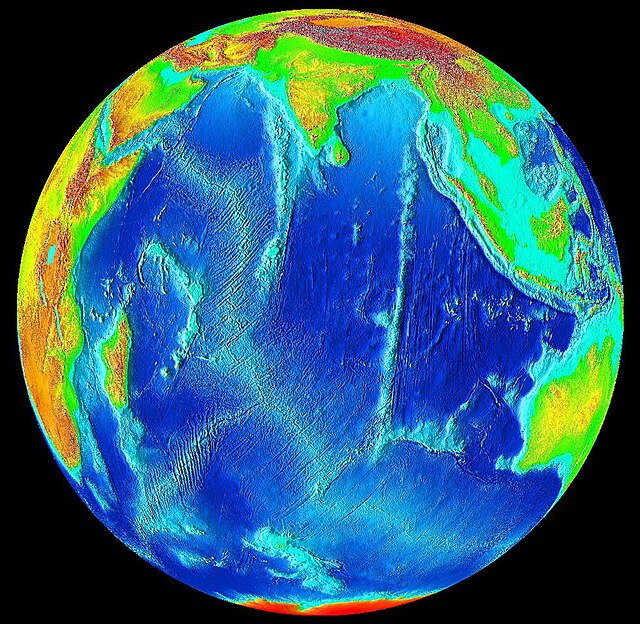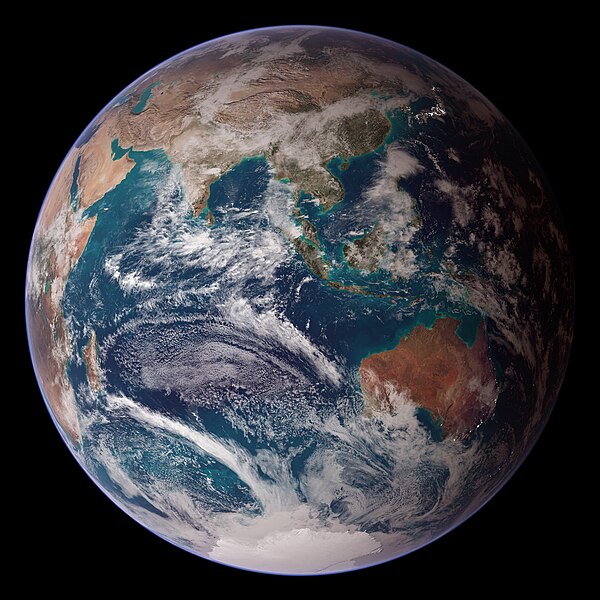The Gulf of Oman or Sea of Oman, also known as Gulf of Makran or Sea of Makran, is a gulf in the Indian Ocean that connects the Arabian Sea with the Strait of Hormuz, which then runs to the Persian Gulf. It borders Iran and Pakistan on the north, Oman on the south, and the United Arab Emirates on the west.
Satellite view of Iran, Pakistan and the Gulf of Oman.
Khor Fakkan, a city in the Emirate of Sharjah, has one of the major container ports in the eastern seaboard of the United Arab Emirates.
U.S. Navy, French Navy, and Italian Navy aircraft carriers conduct operations in the U.S. 5th Fleet area of responsibility in the Gulf of Oman.
The western part of the Indian Ocean, by Vincenzo Maria Coronelli, 1693 from his system of global gores the Makran coast
The Indian Ocean is the third-largest of the world's five oceanic divisions, covering 70,560,000 km2 (27,240,000 sq mi) or approx. 20% of the water on Earth's surface. It is bounded by Asia to the north, Africa to the west and Australia to the east. To the south it is bounded by the Southern Ocean, or Antarctica, depending on the definition in use. Along its core, the Indian Ocean has large marginal, or regional seas, such as the Andaman Sea, the Arabian Sea, the Bay of Bengal, and the Laccadive Sea.
The ocean-floor of the Indian Ocean is divided by spreading ridges and crisscrossed by aseismic structures
A composite satellite image centred on the Indian Ocean
During summer, warm continental masses draw moist air from the Indian Ocean hence producing heavy rainfall. The process is reversed during winter, resulting in dry conditions.
Air pollution in South Asia spread over the Bay of Bengal and beyond.








